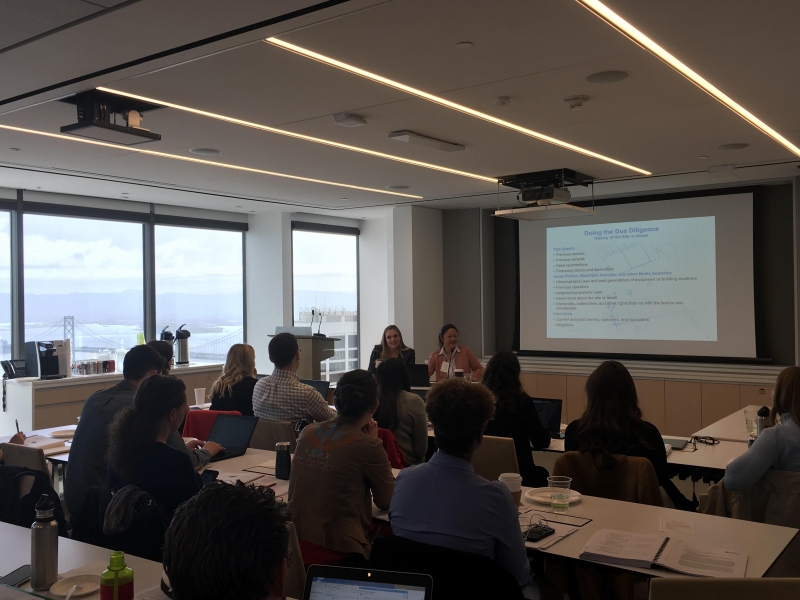The Environmental Law Institute’s 50th anniversary on December 22 occured during a record-breaking year in terms of the sheer number of ELI educational and convening programs, which have been organized around the themes that continue to animate the work of environmental protection after half a century.
It has also been a year with growth in all major areas of the Institute’s work, from judicial training both here and abroad, to marine resource protection, to rule of law formation, to environmental peacebuilding. It’s been a year of expanded engagements in key places like China, with the opportunity to influence how the world’s other major economy approaches environmental protection.
| Western Boot Camp on Environmental Law, March 2019 |
As the Special Golden Anniversary edition of The Environmental Forum shows, it’s been a year of reflection, as we remember the origins of this wonderful Institute for which we are now stewards. We celebrated at the recent award dinner the surviving founders of ELI — Tom Alder, Craig Mathews, and Jim Moorman — those who put pen to paper on the ELI articles of incorporation. As this year is also the anniversary of NEPA, the reflections in the issue you are reading recall the beginnings of the environmental movement that grew up alongside ELI.
There is a human tendency to declare, usually prematurely, “mission accomplished.” It would be a mistake to do that here. While much of the pollution that can be seen, smelled, and tasted has been removed from our domestic environment, we need look no farther than the severe pollution problems in the developing world, emerging worries about new contaminants, the recent problems with lead in drinking water, the growing evidence of biodiversity collapse, the implications of a changing climate, and continuing concerns about the distribution of environmental benefits and burdens across societies, to be reminded that important and potentially grave environmental risks remain to be addressed.
We are also mindful that this is an area in which hard-won progress can always be compromised by political expediency or indifference. ELI, working as it has with governments around the world for much of its 50 years, has watched countries begin the process of investing in a sustainable future only to yield to short-term, non-sustainable practices as a result of changes in political leadership and economic conditions. Regression and compromise of environmental quality remains ever possible, even here, if we do not stay true to the formula that has guided us thus far.
What is that formula? Our experience, and indeed the lesson that the United States has for years been propagating to the rest of the world, is that effective environmental governance and rule of law turn on the presence of a number of synergistic elements, including laws that are clear and enforceable, an engaged citizenry equipped with transparent environmental information, stakeholder opportunities to inform and contest government decisions regarding the environment, environmental public integrity mechanisms that prevent corruption in the administration of environmental programs, institutional arrangements between government actors to ensure efficiency and avoid confusion and duplication, fair and effective enforcement, and an engaged and serious-minded judiciary.
While we should always be in pursuit of reforms that improve and make more efficient how this work is done, we should be wary indeed of any efforts to choke down on any of these anchor elements. We tinker with them at our peril. These are the lessons of the past.
But in this anniversary year, we have also been looking toward the future, with programs and publications seeking to advance our collective thinking on how we might more beneficially harness the emergence of private environmental governance regimes, including environmentally sensitive supply chain management and investment, lending, and insuring practices.
And to bring understanding to the fascinating intersection between environmental law and technology. With the help of many of you, we launched a watershed conference in October — “GreenTech 2019: Innovating Environmental Protection for the Future” — looking at how technology is reshaping regulated activity, advancing sensing and monitoring capacity, and exploding environmental data.
Before wrapping up the year, we and George Washington University law school convened a gathering of thought leaders at Airlie House in Northern Virginia. The event was commemorative, in the sense that it was at Airlie House 50 years ago that the seed was planted that would become ELI, but also forward looking, in terms of envisioning the next 50 years of environmental protection. A fitting conclusion, we hope, to ELI’s 50th year.

